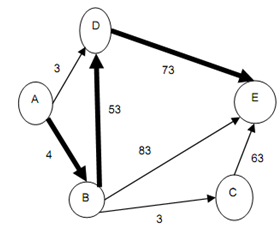Resource Constraints for Single Project Scheduling:
An implicit assumption made throughout this unit is that sufficient resources are available and only technological constraints are important for setting schedules. In most environments, however, resource constraints cannot be ignored. Some of the resources that cannot be used infinitely are manpower, money, equipments and raw materials. As tradition project management techniques avoid these constraints, usually they are called: "feasible procedure for generating a non-feasible schedule".
We shall explore this concept of using the slack time in the activities to move resource demands around using the network given in Figure. There are actually two kinds of slack associated with an arc, for example arc B-C in figure. The total arc slack, as we have appears before, is given in this case by TL (C) - TE (B) - (duration B-C) = 10 - 4 - 5 = 1. The free arc slack is given in this case by TE (C) - TE (B) - (duration B-C) = 9 - 4 - 5 = 0.

Figure: Network Representation
Where, TE is the latest of the arrival times for entering arcs, that means TE = max [(TE of node at tail of arc) + (arc duration)] over all of the entering arcs. Through definition, TE of the starting node is zero. TL is the earliest of the leaving times for the exiting arcs, that means
TL = min [(TL of node at head of arc), (arc duration)] over all of the exiting arcs. Through definition, the TL of the ending node equals its TE.